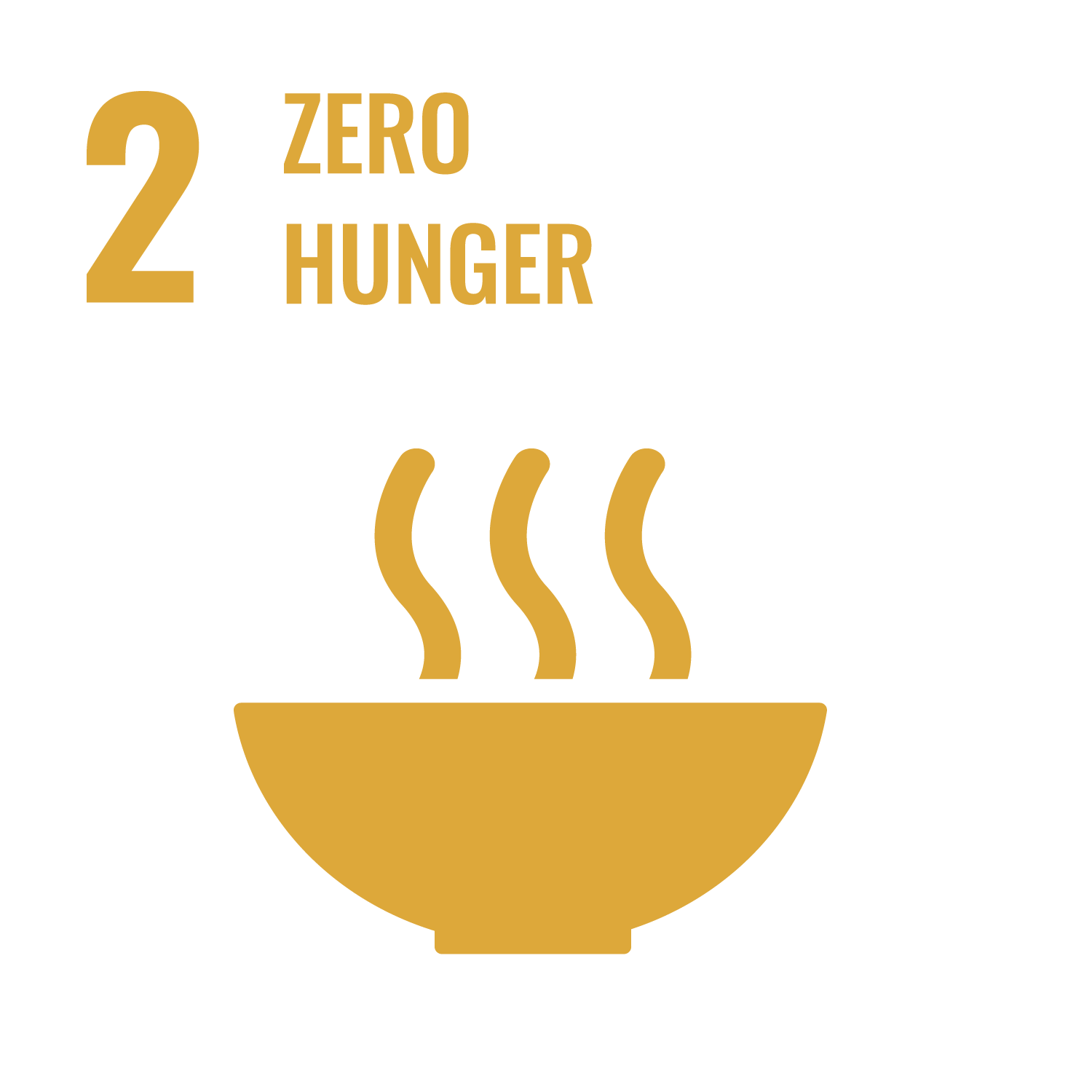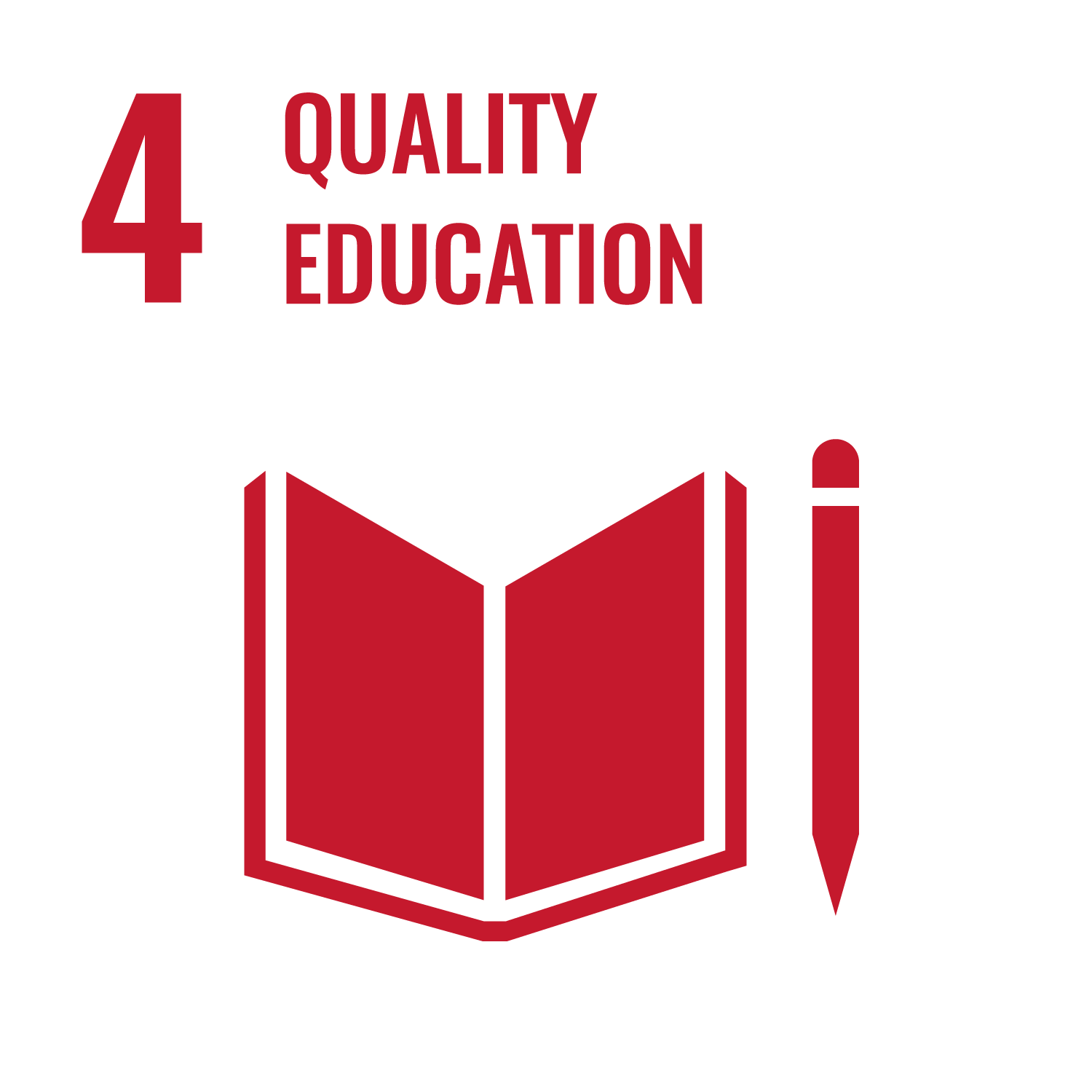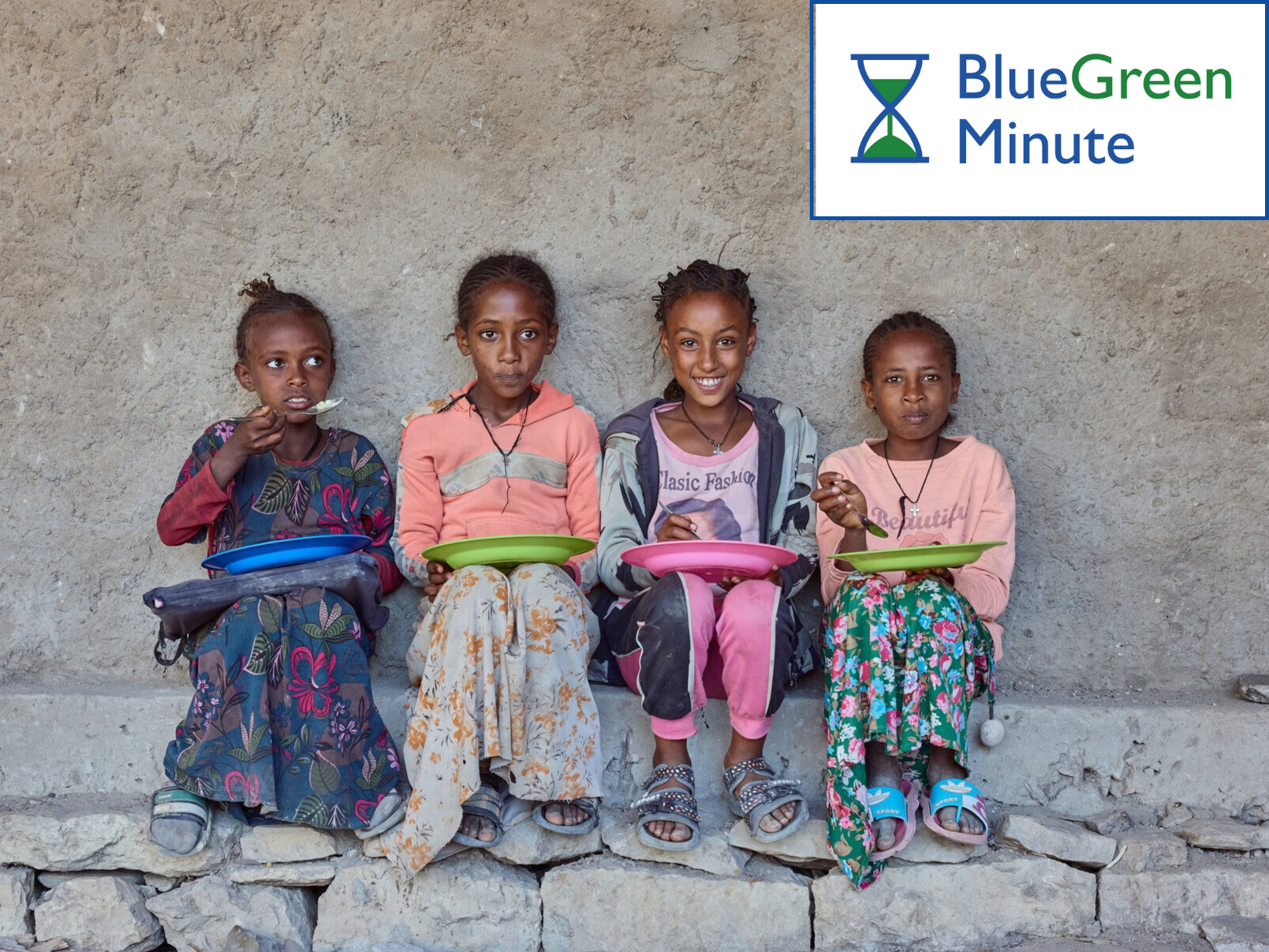Children from Beati Akor Primary School enjoy their school meals. Once a center of excellence before the Tigray war, the school was damaged during the conflict but is now bustling with students following reinstatement of the school feeding program.
In northernmost Ethiopia lies a storied land to which Ethiopian identity traces its ancient roots. It is a land today plagued by hunger and conflict, bearing horrific scars of violence and despair. When war broke out in Tigray Region in 2020, many of its people lost regular access to food. Famine was soon widespread and, among other misfortunes, parents could not afford to send their children to school.
Amidst the turmoil and misery, children like Birhane (age 13) and Aradech (age 11) know all too well the harsh reality of hunger gnawing at their bellies and dreams slipping through their fingers like grains of sand. Their stories also show the promise of school feeding programs in desperate situations.
Helping communities help themselves
Mary’s Meals (www.marysmeals.org) is a charity that establishes school feeding programs in some of the world’s most vulnerable communities. It operates on the principle that parents will be willing and able to send their children to school if a nutritious meal is served there each day. The day-to-day running of its program is owned by the local community, with volunteers (often parents and grandparents) preparing, cooking, and serving the meals to children in their places of education.
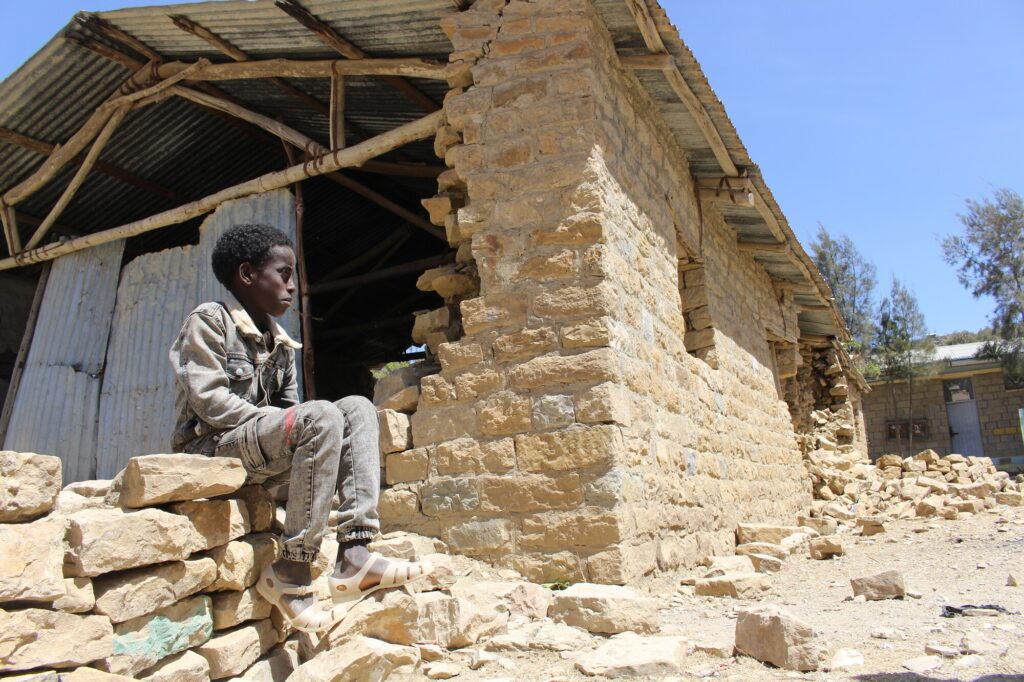
Thirteen-year-old Lewte attends Ara Primary School in Tigray. Before Mary’s Meals were served at his school, there was a very real possibility that Lewte would drop out of school. Now there is a strong chance he will continue with his education and work toward the chance for a better future.
Mary’s Meals began serving meals to children in Ethiopia in 2017 and is now the largest provider of school meals in Tigray. During the war from 2020 to 2022, it had to suspend school feeding programs there. After hostilities ceased, the charity’s feeding program resumed first in communities where it had operated earlier. It has since expanded to new areas as rapidly as the situation on the ground and limited resources would allow it.
Food makes learning possible
Birhane’s story shows the impact a meal at school can have. Mary’s Meals had previously had a feeding program at his school. When the charity had been forced to discontinue the meals, however, the boy had had to stop attending school. When the program came back, Birhane could return to the classroom and focus on his studies because the food would give him enough energy to learn.
“Now I am very happy at school,” he says. “I am learning and understanding my subjects more and more. If you are properly educated, you can be a doctor, a teacher, you can get whatever you want.”
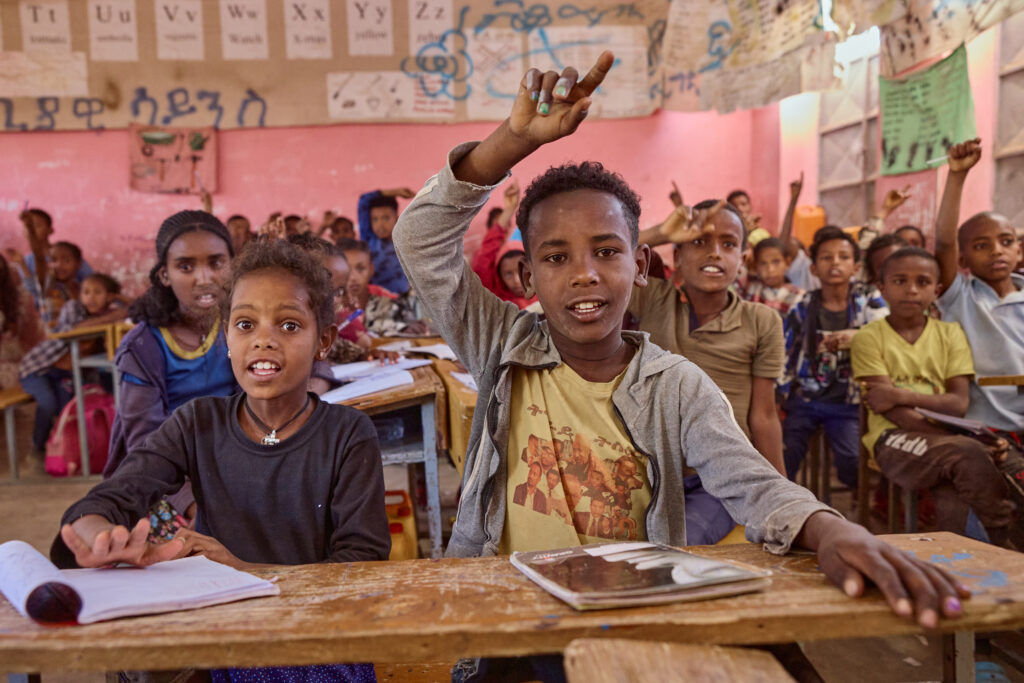
Birhane (right) and his classmates are back in school, where kids belong.
Elsewhere in Tigray’s Hintalo Wajirat District, Ara Primary School stands as a somber reminder of the toll that war has exacted on its innocent victims. Shelled and battered, its walls bear witness to the atrocities that have unfolded within its midst. When Mary’s Meals first visited the school, classrooms formerly filled with children stood eerily empty.
Aradech was once a high-performing student at Ara Primary School. She had been eager to learn but was torn away from her studies by the mercilessness of hunger. Aradech’s father died during the war and she was the sole one of four children that her mother, Fitsum, has chosen still to send to school.
Schools full of vulnerable kids
Before Mary’s Meals arrived at her school, Aradech struggled to focus on anything but her numbing hunger, and she wasn’t alone. Teachers, parents, and students struggled daily to find enough to eat. Aradech’s teacher reports that the school is full of vulnerable children and describes as particularly “horrific” the case of Aradech and her family. “The family doesn’t have anything to eat, (and) no one to support them, so her and her family’s life is very horrible and frustrating,” the teacher says.
“We are living with hunger,” confirms Fistum, Aradech’s mother. “We only have this piece of bread or some soup. We are surviving just with this. The problem now is the shortage of rain consecutively for three years. This repeated seasonal problem is causing great hunger – even death. It is not just [happening to] me, it is not only [happening in] my village, it’s all over Tigray.”

The landscape around Ara Primary school illustrates why life in this region is so challenging. The land is tinder-dry as far as the eye can see, dotted with gaunt cattle and soil so dry it turns to dust your hand.
The effect of providing meals at Ara Primary was clear. In the few hours that Mary’s Meals representatives spent there, 15 students came to register for school. Shortly after this visit, thanks to the overwhelming support of Mary’s Meals supporters and the dedication and strength of its local partner, school feeding was able to begin at the school. The community around Ara Primary, including Fistum, worked diligently to implement its new school feeding program to address the urgent need for life-saving food among children and families. They constructed a rudimentary outside kitchen to allow the program to start as quickly as possible, created a shaded area where the children can eat, and organized a roster of volunteers to cook and serve the nutritious porridge-like meal.
Aradech says: “I feel joyful now that we have school feeding. Before it started, I always had a headache at school from hunger. Now I feel happy, and we have the energy for learning, even for jumping rope. It has made such a difference at school.”

Aradech (right) with her schoolmate Mahlet.
A simple idea that works…
The Mary’s Meals concept is a simple idea that works. Working with trusted local partners, the charity currently reaches more than 2.4 million children within their schools in 17 countries, including Haiti, Zambia, South Sudan, Yemen, Syria, and Malawi. Mary’s Meals founder and CEO Magnus MacFarlane-Barrow explains that it costs just €22 (£19.15 GBP or $25.20 USD) to provide a child with a hot meal for a whole school year. Most typically, this is a high-energy and high-protein local dish of corn or wheat with dried beans, lentils or peas plus supplemental vitamins and minerals.
“Witnessing a truly appalling humanitarian catastrophe in Tigray – one that is already taking lives by starvation and robbing children of their futures by preventing school attendance – we wanted to expand our school feeding program as quickly as possible,” relates MacFarlane-Barrow. “Each gift made toward our appeal is already making a tangible difference in children’s lives, having enabled us to grow our program very rapidly. But our work is far from over. There are still so many schools around the world with empty classrooms crying out for Mary’s Meals to reach them, whilst outside emaciated children beg to survive.”
…but a few have so much and many so little
We all know there is enough food in this world to feed all who hunger. We all recognize, too, that every child should be in school. But far too often this still doesn’t happen. It mostly comes down to creative organization, a will to make this happen, and, above all, sharing of resources by those who have much with those who have little or nothing.
(For more on the crisis in Ethiopia and the work of Mary’s Meals, visit:
www.youtube.com/watch?v=0v2nozeYQgY&ab_channel=Mary%27sMealsUK )


